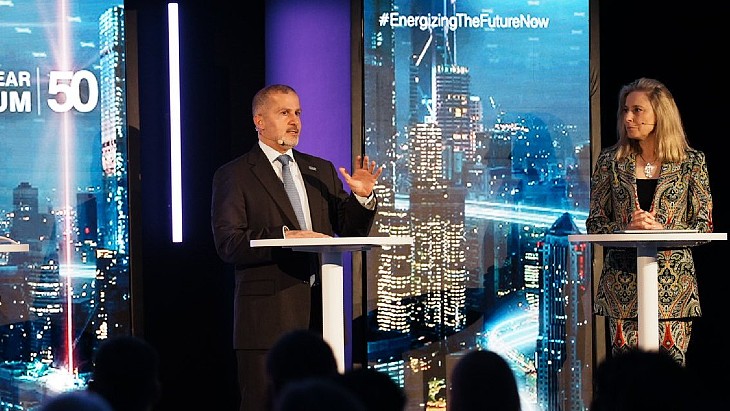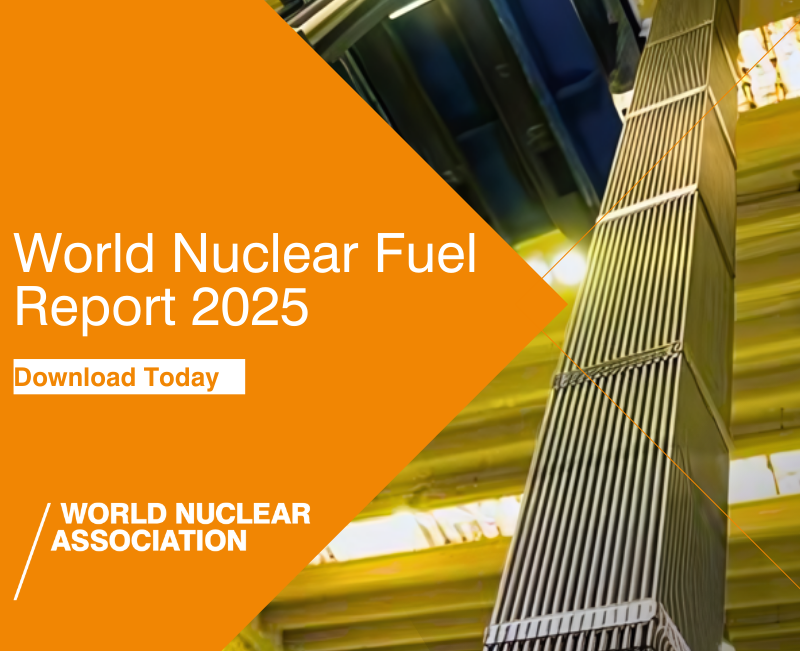Commonwealth Fusion Systems (CFS) is currently working to build the SPARC prototype fusion machine at its headquarters in Devens, Massachusetts. It is described as a compact, high-field, net fusion energy device that would be the size of existing mid-sized fusion devices, but with a much stronger magnetic field. The donut-shaped device will use powerful electromagnets to produce the right conditions for fusion energy, including an interior temperature surpassing 100 million degrees Celsius. It is predicted to produce 50-100 MW of fusion power, achieving fusion gain greater than 10.
To keep SPARC's superconducting magnets cold enough to perform well, CFS houses them inside a larger chamber called the cryostat, which insulates them from the outside world with a vacuum.
CFS has now installed the cryostat base which will support the 1000-tonne weight of SPARC. Measuring 24 feet (more than 7 metres) in diameter and weighing 75 tonnes, the base also absorbs some of the neutrons the fusion process creates and accommodates conduits for helium coolant, magnet power, and communication links to internal sensors.
"With the cryostat base now in place, we've begun building the heart of our fusion energy system," said Samer Hamade, Vice President of Projects at CFS. "This is a very visible example of how the CFS fusion energy project has shifted into a new phase, tokamak assembly. It's really energising to see the first part of SPARC filling what was a circular hole in the floor - a true testament to the hard work and dedication of the team."
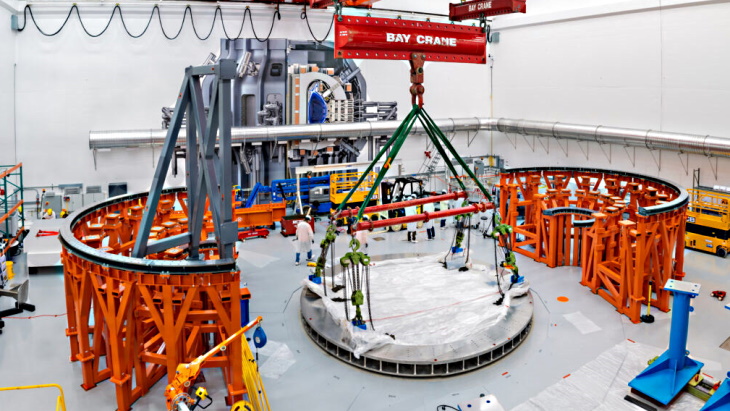
(Image: CFS)
In the coming months, CFS will install D-shaped toroidal field (TF) magnets into two orange stands, insert SPARC's vacuum vessel into the interior of those TF magnets, add the circular poloidal field (PF) magnets that loop around the structure, drop the cylindrical central solenoid (CS) magnets down the centre of the tokamak, and seal the whole assembly with the cryostat sides and top.
The company has already been working hard to install the equipment around SPARC that will make it work. That includes the systems to power and cool the tokamak's super-strong magnets, the diagnostic sensors to monitor the fusion process, and the heating system to turn SPARC's hydrogen fuel into a plasma for the fusion process.
"We completely designed the base simultaneously with all SPARC system interfaces like magnet supports, power, cryogenics, vacuum pumping, and instrumentation," said Moji Safabakhsh, a Director of Engineering at CFS. "And we received it on time after speedy fabrication. Installation of the cryostat base is a watershed moment starting the assembly process and interconnecting SPARC to the balance of the plant."
SPARC will pave the way for a first commercially viable fusion power plant called ARC, which is intended to generate about 400 MWe - enough to power large industrial sites or about 150,000 homes. ARC is expected to deliver power to the grid in the early 2030s.
In December 2024, CFS announced plans to independently finance, construct, own and operate a commercial-scale fusion power plant in Chesterfield County, Virginia. The company - a Massachusetts Institute of Technology spinout company - said it had reached an agreement with Dominion Energy Virginia to provide non-financial collaboration, including development and technical expertise as well as leasing rights for the proposed site at the James River Industrial Park. Dominion Energy Virginia currently owns the proposed site.
Cryopumps for ITER completed
Fusion for Energy (F4E) - the ITER Organisation's European domestic agency - announced that the eighth and final torus and cryostat cryopump for the International Thermonuclear Experimental Reactor (ITER) had completed factory acceptance tests.
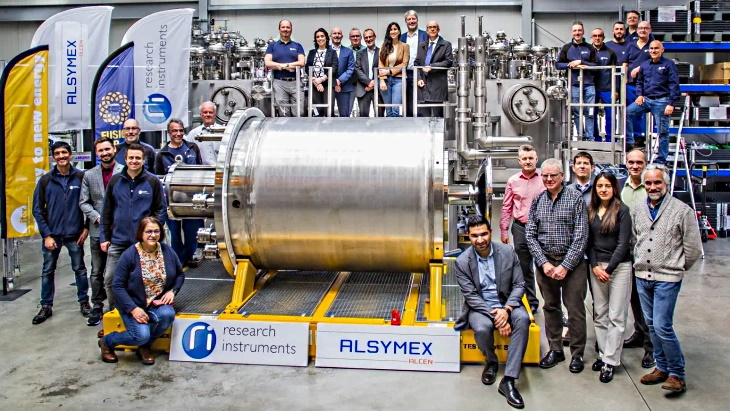
(Image: F4E)
The components, a key part of the reactor's fuel cycle and vacuum systems, were manufactured in collaboration with Research Instruments and Alsymex. Building on a pre-production unit, series fabrication of the components began in 2020 and peaked with the first deliveries last year.
Out of the eight cryopumps delivered by F4E, two will serve the cryostat and six will be connected to the vacuum vessel through the divertor. The cryopumps will trap gas particles using cryopanels, cooled at ultra-low temperatures of about -269°C, and later release them to re-process the unburned fuel.
In the next years, ITER Organisation will test the cryopumps under real cryogenic conditions by connecting them to the powerful cryoplant circuits.
"The cryopumps required a flawless production chain to secure the tight tolerances all through machining, welding and assembly," said Francina Canadell, Project Manager at F4E. "Thanks to a smooth coordination, we managed to meet the standards and even solve some unforeseen issues on the spot."
ITER is a major international project to build a tokamak fusion device designed to prove the feasibility of fusion as a large-scale and carbon-free source of energy. The goal of ITER is to operate at 500 MW (for at least 400 seconds continuously) with 50 MW of plasma heating power input. It appears that an additional 300 MWe of electricity input may be required in operation. No electricity will be generated at ITER.
Thirty-five nations are collaborating to build ITER - the European Union is contributing almost half of the cost of its construction, while the other six members (China, India, Japan, South Korea, Russia and the USA) are contributing equally to the rest. Construction began in 2010 and the original 2018 first plasma target date was put back to 2025 by the ITER council in 2016. However, in June last year, a revamped project plan was announced which aims for "a scientifically and technically robust initial phase of operations, including deuterium-deuterium fusion operation in 2035 followed by full magnetic energy and plasma current operation".

_66241.jpg)



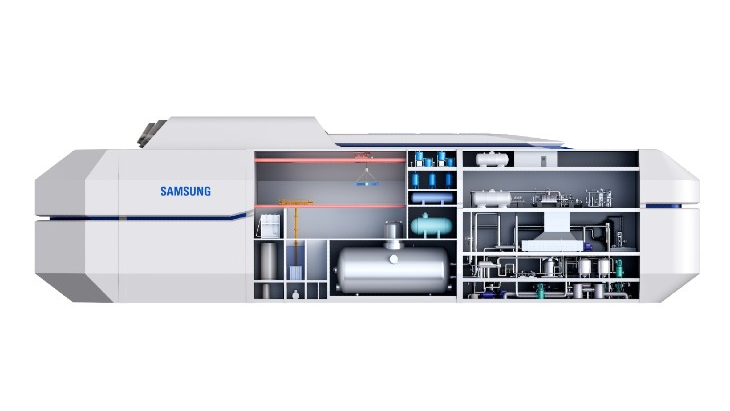
_63865.jpg)
_18570.jpg)
_16159.jpg)

